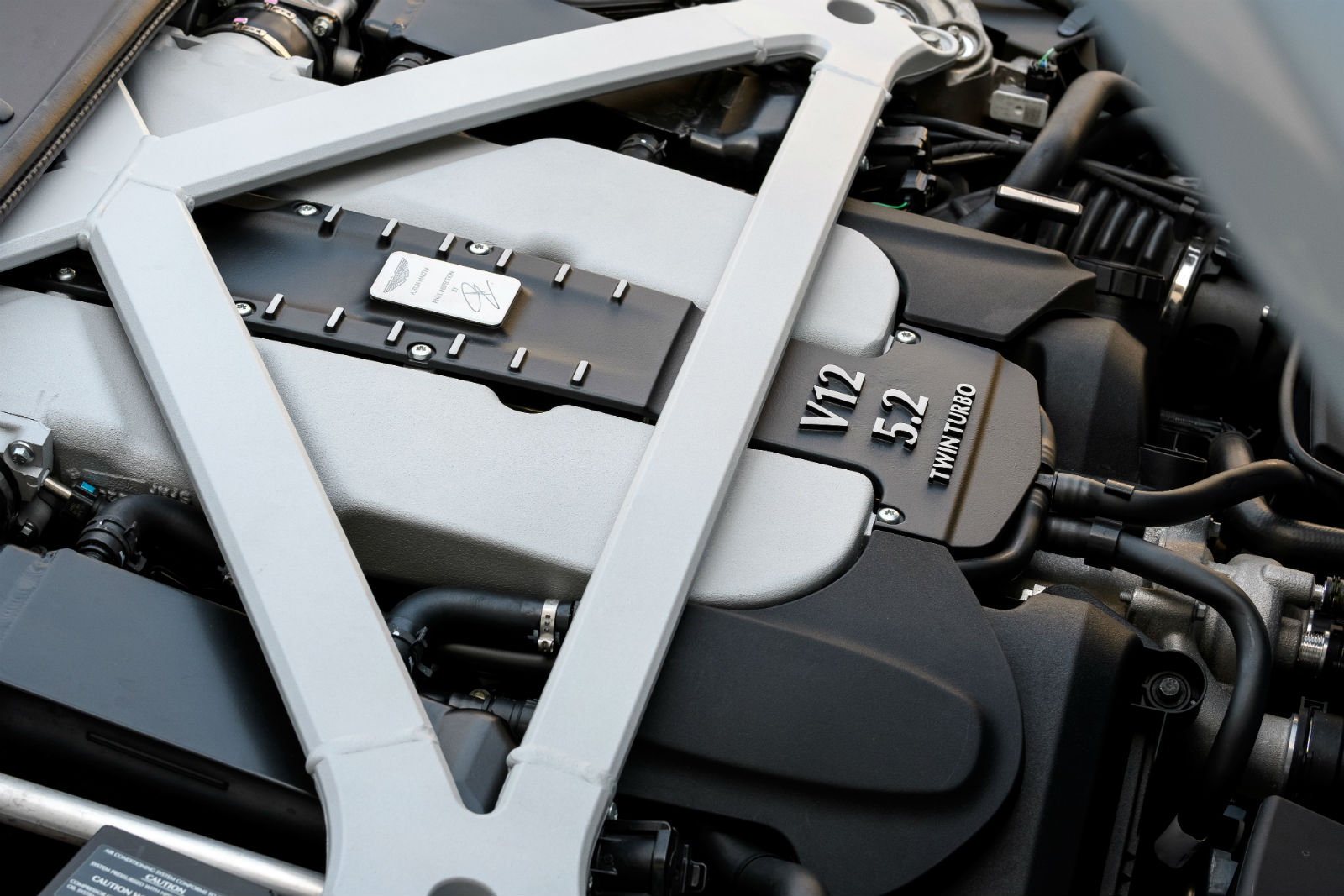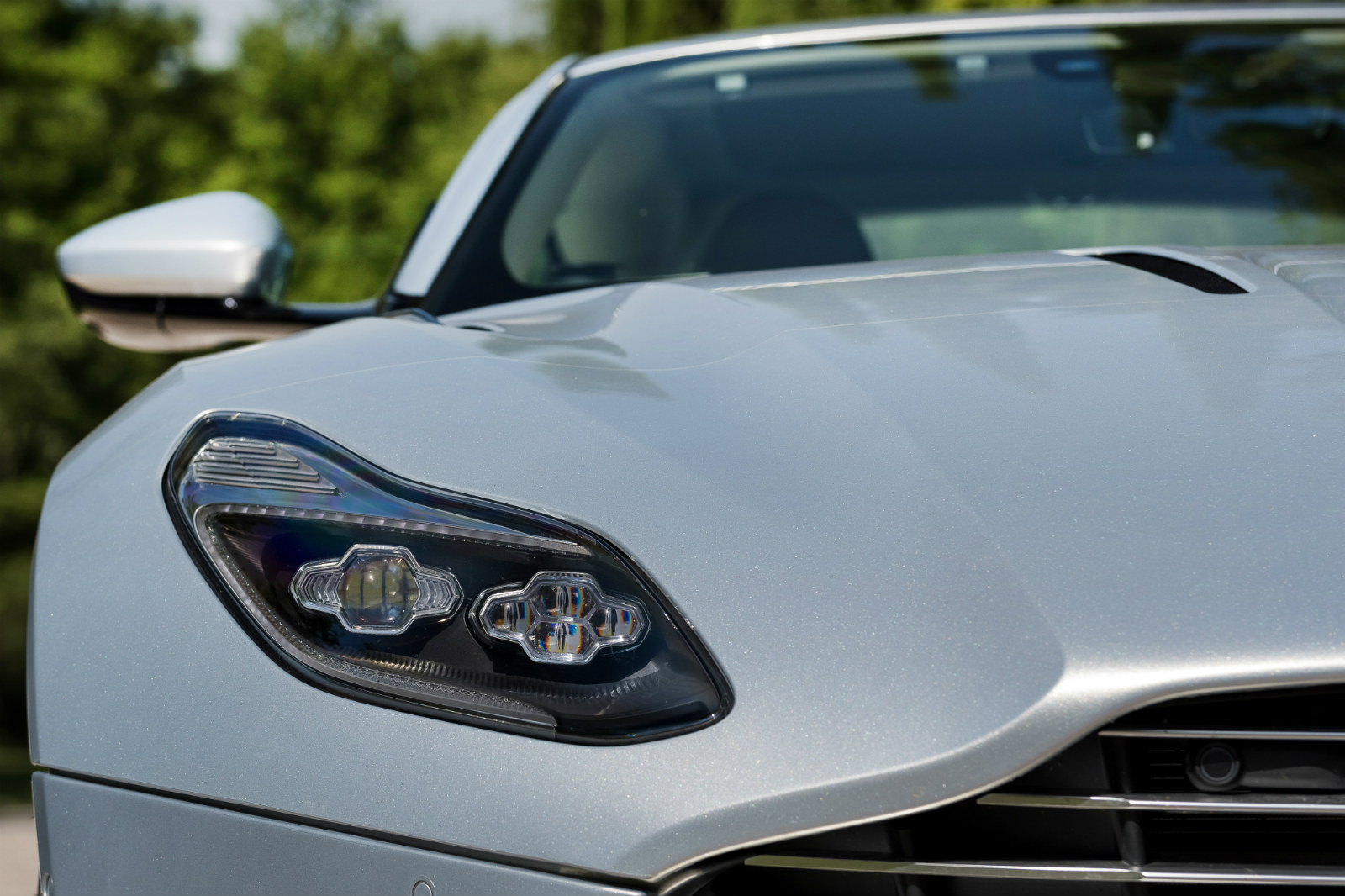Test Drive: 2017 Aston Martin DB11
Behind the wheel of the new voluptuous new sports car

On the narrow Tuscan roads, it’s the width of the new Aston Martin DB11 that is especially noticeable, though planting your foot on the accelerator, the brawny 5.2-liter V12 makes a convincing plea of its own. The DB11 (which is set to hit dealerships next month) is the first of an entirely new line of hand-built sports cars to come from Aston’s Gaydon headquarters in the next few years, and the differences between this and its predecessor the DB9—or any previous Aston Martin for that matter—are immediately clear.

It starts with an all-new bonded aluminum chassis, one which allows for the newest DB’s dramatic proportions. The clamshell hood (which looks about 12 miles long) is the largest in the industry, naturally begging closer inspection and drawing in the eyes. It’s something design chief Marek Reichman adamantly pushed for, and with good reason. And with initial intrigue established, you can’t help but think the car itself looks like a concept, sculpture to be admired before the reality of regulations and budget offer a diluted compromise. But this new DB11 is showroom-ready, it’s the fresh handmade farfalle, pretty, and somehow served perfectly al dente.

Beyond the initial gaze, the details are there too. The badge is made by a jewelry-maker, not an automotive supplier. The grille is real aluminum, not plastic made to impersonate metal. Perhaps the biggest aesthetic difference comes on the inside, where the fruits of Aston’s partnership with Daimler are paying early returns.
Aston gets the Mercedes-AMG multimedia infotainment system with its intuitive scroll-wheel and Aston-specific graphics and interfaces. But here is a choice example of the new Aston, with a management team that freely admits that in-cabin technology was lacking before, and its German big brother has remedied that for this next generation of cars. The DB11 feels wholly modern and fresh, more so than any Aston to come previously.

Impressively, the newest car in the six-decade-plus DB-lineage retains a 12-cylinder engine, in this, the era of downsizing. But the 5.2-liter V12 is all muscle and 12 cylinders when you want it, and a downsized V6 when you’re just puttering around in traffic or the like. This is thanks to some clever engine management—and Aston’s newest car gets cylinder-deactivation—which helps make it the most fuel-efficient Aston sports car ever.

The nature of Aston’s DB11 varies greatly based on which driving mode you’re in. It can be a thoroughly pleasant, daily-driving sports car in GT mode, but it’s got a few notches, and click past Sports and into Sports Plus, and things get interesting. Here, the V12 seems thoroughly connected to the throttle, the eight-speed transmission is most alert, and the twin-turbos happiest to spool. Steering feels accurate and intuitive, and take a corner at speed and the tail seems happy to skid out before correcting.

The super sports car credentials are numerous: a zero-to-60 mph time of just 3.8 seconds, 12 brawny cylinders, twinning turbos, 25% stiffer suspension than DB9, specially formulated Bridgestone 20-inch rubber, rear-wheel drive, an aero-blade which gives the car the stability and downforce it needs sans the drag, all the goodies. But it doesn’t feel as angry as cars with far less power. This is deliberate. Aston chief Andy Palmer tells us, “We must differentiate the line-up further, we know this and you’ll see this, starting with DB11.”
This means Aston has nailed the GT car character. Elegant, fast, and powerful, this is the one you want to take out for the weekend drive, take the long way up the coast, the perfect road trip sports car. While abundantly capable, this isn’t the all-attack track-beast, and nor is it meant to be.

On a long stretch of country road, amid the pleasant ruin of Tuscany—abandoned buildings that lack menace, reminders of the industry and ambition of another era—we are given time to really think about the car. More than anything, it’s the carefully considered details, added to what Aston has always done well, that characterize the 2017 DB11. You hear the turbos spool, an almost turbine-like release occasionally, but you still have that naturally aspirated note as well that gratifyingly fills the ear. It’s a bit of the classic Aston, with a bit of the new.

As the early afternoon sun filters through the trees, glancing back in the rearview mirror, we can see the extravagantly sculpted shoulders of the DB11. From every angle, this car is visually entrancing. Get in really close in some places, and there is further detail there too. Like under the front-wheel arches, where a “curlicue” mitigates air turbulence and helps direct flow. It’s aerodynamic details like this—almost invisible—that punctuate a departure from the old Aston. It’s an appreciate for what a grand touring car can be, fully realized, with the backing and enthusiasm of a new regime out to prove that great product is the best business case.
The 2017 Aston Martin DB11 is priced starting at $215,000 and will be in showrooms this fall.
Images courtesy of Aston Martin












